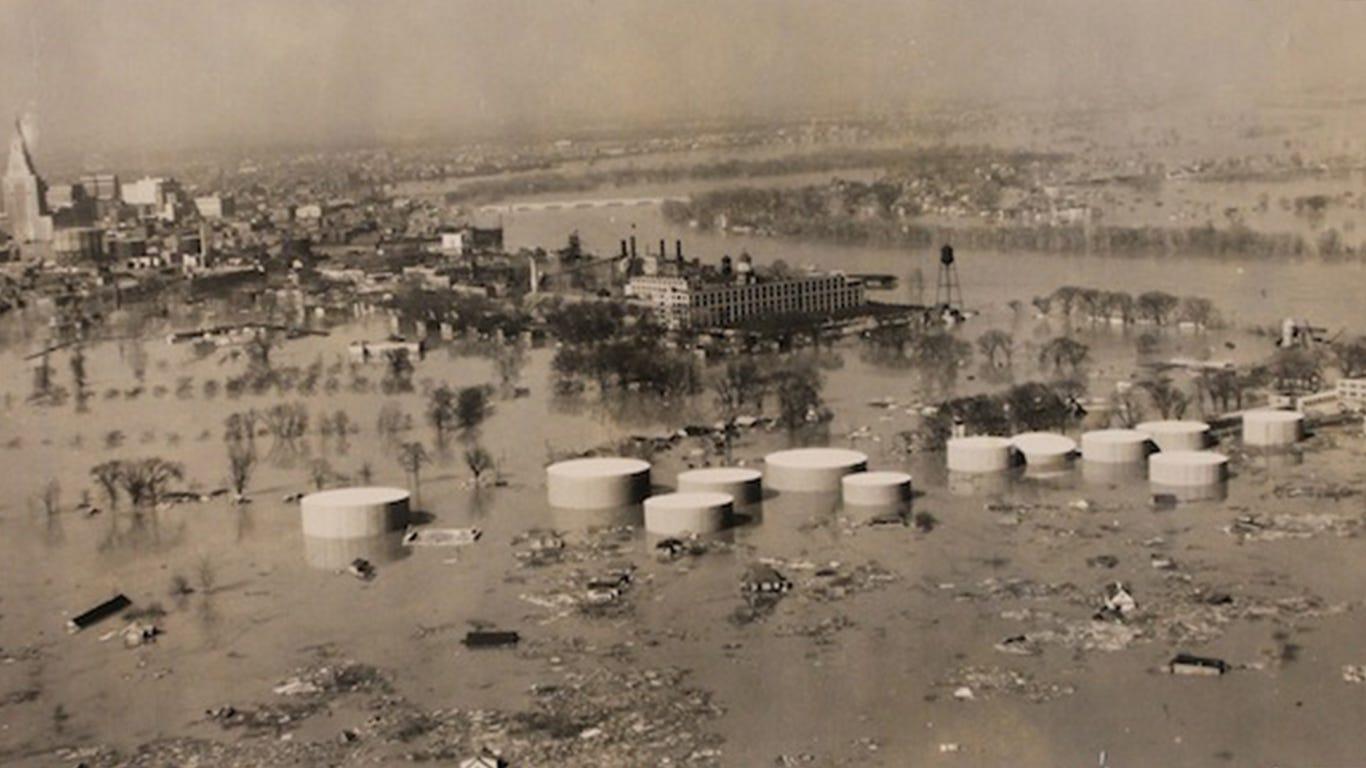The agricultural heartland of Kentucky has weathered a perfect storm of calamities. Unprecedented flooding and ongoing trade tensions have drastically altered the economic landscape for corn and soybean producers across the Commonwealth. Fields lay submerged. Farmers face unanticipated challenges that threaten not just seasonal yields but long-term viability of their operations.
Spring rains hammered the region with remarkable persistence this year. By mid-April 2024, Kentucky farmers had planted merely 12% of their intended corn crop, a dramatic shortfall compared to the typical five-year benchmark of 23%. The Kentucky River surged to exceptional heights, cresting at 48.24 feet in certain areas – a measurement surpassed only once in recorded history. Minor flooding typically initiates at 31 feet, but recent water levels demolished this threshold, submerging lower-lying structures and wreaking havoc on agricultural infrastructure.
The consequences stretch well beyond immediate crop losses. When planting schedules drift beyond optimal windows, even healthy stands struggle to achieve their inherent potential. The compressed vegetative periods mean corn and soybean plants develop under considerable stress, which subsequently translates to diminished harvests. Some operations, particularly those situated along river valleys, anticipate yield reductions approaching 15% compared to previous seasons.
Kentucky’s agricultural sector also grapples with the lingering effects of trade disruptions. The competitive disadvantage has eroded profit margins and complicated planning decisions for growers who already operate on thin financial margins. Export volumes have contracted, although certain niche markets remain somewhat accessible despite the broader commercial turbulence.
Western regions and properties adjacent to the Ohio River Valley have experienced especially severe impacts. The topographical characteristics of these areas – primarily their low-lying positioning within established floodplains – render them particularly susceptible to extended inundation events. Delayed plantings cascade throughout the agricultural calendar, limiting opportunities for sequential wheat and double crop soybean rotations that many producers depend upon for financial stability.
The agricultural community confronts numerous technical challenges in flood-affected fields. Soil compaction emerges as a predominant concern, restricting root penetration and hampering nutrient absorption. Prolonged moisture creates ideal conditions for fungal pathogens and specific insect populations. The oxygen deprivation endangers young seedlings during crucial developmental phases. Although experienced farmers understand these dynamics, the magnitude and timing of recent events have overwhelmed conventional mitigation strategies.
Federal assistance programs have activated in response to these extraordinary circumstances. The U.S. Department of Agriculture offers technical guidance and financial relief mechanisms designed specifically for producers impacted by severe weather events. These initiatives provide essential support, but many farmers express concerns regarding the adequacy of such programs relative to their substantial losses.
The flooding disaster extends beyond agricultural sectors. Buffalo Trace Distillery, renowned producer of premium bourbon including the coveted Pappy Van Winkle label, temporarily ceased operations when floodwaters engulfed portions of their production facilities. The distillery reported substantial damage as water inundated lower building levels, parking areas, and trapped vehicles. Much like farming operations, the distillery faces an uncertain recovery timeline amid ongoing assessment efforts.
Rural communities throughout Kentucky demonstrate remarkable resilience despite these compounding hardships. Local officials established emergency relief funds, such as the Franklin County Flood Relief initiative, to channel support toward affected residents. The multifaceted nature of these challenges, however, necessitates comprehensive responses from governmental entities, private industry, and community organizations working collaboratively.
This convergence of meteorological extremes with international trade complications illustrates the peculiar vulnerability of agricultural economies to factors beyond producers’ control. The farming sector must navigate immediate recovery while simultaneously developing adaptive strategies for an uncertain climatic future. Traditional risk management approaches require fundamental reconsideration as historical patterns become increasingly unreliable predictors of contemporary challenges.
Kentucky’s agricultural narrative continues to unfold amid these extraordinary pressures. The resilience and adaptability of farming communities will ultimately determine how this vital segment of the Commonwealth’s economy navigates toward recovery. Whatever emerges will reflect not just the immediate response to current disasters, but a fundamental reevaluation of agricultural practices in an era of heightened uncertainty and climatic instability.









